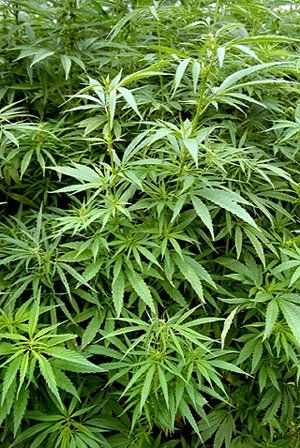Heckle: The Road to Legalization: A change in perspective

marijuana plant
February 15, 2016
Since the stunning findings of the Shaffer Commission and Nixon’s following attempts to disguise the truth from the American people, more than 16.5 million people have been arrested for crimes related to cannabis. Yet, more than 80 percent of those arrested were charged with minor misdemeanors related to the plant, costing tax payers in excess of $20 billion a year.
The number arrested and the finical burden on American tax payers has done nothing to curb drug use in the United States. Furthermore, the legality of marijuana in several states has brought the reality of this failed drug policy to the attention of the American people.
After Nixon’s contradictory statements following the Shaffer Commission in which he lumped homosexuality in with the so called “immoral” use of drugs — furthering the discriminatory sentiment seen in almost all aspects of marijuana illegality — marijuana found itself, for a brief period, in a presidential appeal for legalization.
Former president Jimmy Carter, along with major publications such as The New York Times, The Washington Post and The National Review, called for the decriminalization of the substance. Carter even went so far as to address Congress in 1977, claiming that anti-marijuana laws did more harm to users than marijuana itself — a claim that would be repeated in the decades to come.
Yet, marijuana’s brief period in the light would be cut short soon after Reagan took office. For the next 20 years, marijuana would once again find itself in the midst of growing punitive policies, fueled in most part by the fear of crack cocaine in the late 1980s.
While the impact of the “Just Say No” Campaign — criticized heavily for its simplification of the complex issue of drug abuse — was successful in lowering drug use overall, marijuana arrests increased by 165 percent in the years after the campaign. Now considered a pop-culture joke, the “Just Say No” campaigns’ impact on marijuana use was both ineffective and short-lived.
Yet, as the world entered the 21st century, questions about the justifications and effectiveness of marijuana prohibition began to enter the mind of the public.
As the various medical uses of the plant began to find scientific bases and the use of the drug recreationally became less ostracized — thanks in no small part to the comedic side of marijuana use found in pop culture — the racist aspects of prohibition began to reveal themselves. The rate of marijuana use between blacks and whites in the United States is virtually identical, but African-Americans are four times more likely to be arrested on a marijuana-related charge.
Current support for a federal repeal of marijuana prohibition is supported by 58 percent of Americans. Furthermore, almost 40 percent of Americans claim to have used marijuana at least once in their life. In 2014, the state of Colorado changed the face of drug policy in the United States by legalizing marijuana for recreational use.
In Colorado, any individual over the age of 21 can legally purchase and possess small amounts of cannabis for recreational use. Following Colorado’s legalization, Alaska, Oregon, Washington and the District of Columbia would go on to accept marijuana as a legal, recreational substance.
Despite the baseless fear-mongering by legalization critics, the effects of marijuana legalization on Colorado have been extremely positive. The state is saving millions of dollars on judicial adjudicatory cost for marijuana arrests, which are down by almost 80 percent. Furthermore, arrests for growing and illegally distributing marijuana are down by more than 90 percent.
Since legalization, violent crimes in Colorado have fallen by 2.2 percent, burglaries by 9.5 percent and overall property crimes by 8.9 percent.
While no one can accurately attribute the fall of violent and property crimes to marijuana, it’s safe to say the regulation of the substance has done more to curb drug use and violence than almost 80 years of prohibition. As regulated dispensaries continue to sell marijuana at lower costs and in safer environments, the need for illegal street dealers among users has disappeared — this can be seen in the statistics above.
Therefore, the crime aspect of marijuana is disappearing. Youth has less access to marijuana because of this, and Colorado has seen an overall decrease in recreational marijuana use among teens.
The economic effects of legal marijuana are astounding. Colorado has one of the fastest growing economies in the United States. Recreational marijuana contributed $40.9 million of tax revenue for the state within the first nine months of legalization alone, with $2.5 million being spent on health education in schools.
The billion dollar industry of legal marijuana not only brings an abundance of money into the state but also creates new jobs. Colorado has seen its unemployment rates at a six-year low since legalization.
The example set by Colorado and other states is helping rid the Nixon-era McCarthyism toward cannabis that the United States has endured since in the 1930s. Without including arguments for the medicinal benefits of marijuana, the legalization of marijuana has proven an effective way to end the wasteful spending on drug enforcement and create a new economic boom.
The atmosphere or racism and prejudice behind the prohibition of marijuana is coming to a long-awaited end, revealing the true nature of this archaic and ineffective drug policy.
















